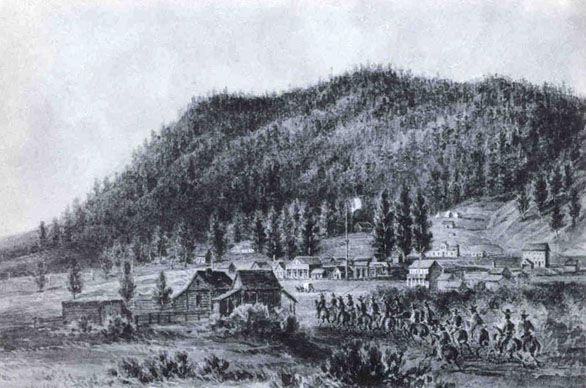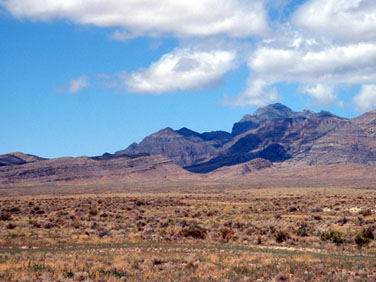Army Engineers Surveyed the Route for “The Loneliest Road in America"
In 1986 Life magazine designated the 265-mile stretch of U.S. Highway 50 in central Nevada between Ely and Fernley as “The Loneliest Road in America.” The article quoted a spokesman from the American Automobile Association: “It’s totally empty. There are no points of interest. We don’t recommend it. We warn all motorists not to drive there unless they’re confident of their survival skills.”
 |
| Col. James H. Simpson as St. Louis District Engineer |
This portion of U.S. 50 originated as part of a wagon road through the Great Basin laid out by Capt. James Hervey Simpson of the U.S. Army Corps of Topographical Engineers. Simpson, a West Point graduate (1832), became the Army’s chief topographical engineer in Utah in 1858. He came to the assignment with experience in surveying and constructing roads in the West. Simpson was certain that a shorter route through the Great Basin to California was possible. Up to then, the principal pathway for overland migration through this desert region ran alongside the Humboldt River, in western Utah Territory (now the state of Nevada).
In 1859 the secretary of war approved Simpson’s proposal to establish a new route. In the U.S. Army’s great tradition of scientific exploration—a tradition begun by Lewis and Clark and perpetuated by the Topographical Engineers—the captain launched his expedition. The military party consisted of Simpson as commander, Lieutenants J.L. Kirby Smith and Haldimand S. Putnam (also “topog” officers), and an escort of mule-mounted infantrymen and dragoons. Completing the group were several civilians, including a geologist, naturalist, meteorologist, artist, daguerreotypist, packers, Mexican herdsmen, and Indian guides. The party also included John Reese, who, with other Mormons, had earlier traveled across the central Great Basin. From Camp Floyd, near Salt Lake City, the party set out on May 2, 1859. It crossed numerous mountain ranges and valleys, reaching the little Mormon settlement of Genoa in present-day western Nevada on June 13.

Captain Simpson's expedition arriving at Genoa, a Mormon settlement on the
eastern slopes of the Sierra Nevadas near Lake Tahoe. (National Archives)
Simpson made a quick journey to California, survived a harrowing return ride over the Sierra Nevada Mountains in a stagecoach with a drunken driver, and rejoined his party. For part of the march back to Camp Floyd, the expedition traveled along a more southern route, concluding the journey on Aug. 4. Simpson announced that his central route was 288 miles shorter than the Humboldt River road further north and, although the area was a desert, it had sufficient water and grass for travelers.
Simpson’s report, not published until 1876, is a classic in the literature of American exploration. Unlike many travelers of that day and since, he found beauty in the desert and expressed respect and sympathy for the Indian inhabitants of the region. Appended to his narrative were the reports by scientists on the geology, natural history, ethnography and meteorology of the corridor.
 |
| View from the loneliest road in America |
Almost immediately, California-bound emigrants began using the new pathway in large numbers. Soon, too, the Great Basin routes of the Pony Express and the transcontinental telegraph were running along or close to the Simpson road. The completion of the transcontinental railroad, which followed the more circuitous Humboldt route, diminished the importance of the central corridor. Gold and silver discoveries in central Nevada, however, brought population to the area and the Simpson road continued to be useful.
In the early 20th century, the Lincoln Highway (America’s first coast-to-coast thoroughfare) followed or approximated the path of the old wagon road through Utah and Nevada. In the 1920s it became part of U.S. 50 in the nation’s new federal highway system. Regardless of Life magazine's claim, the modern motorist has no better way of experiencing the unique attractions of the Great Basin than to travel this road, which owes its existence to an astute and observant Army engineer and the expedition he commanded.
* * *
February 2004